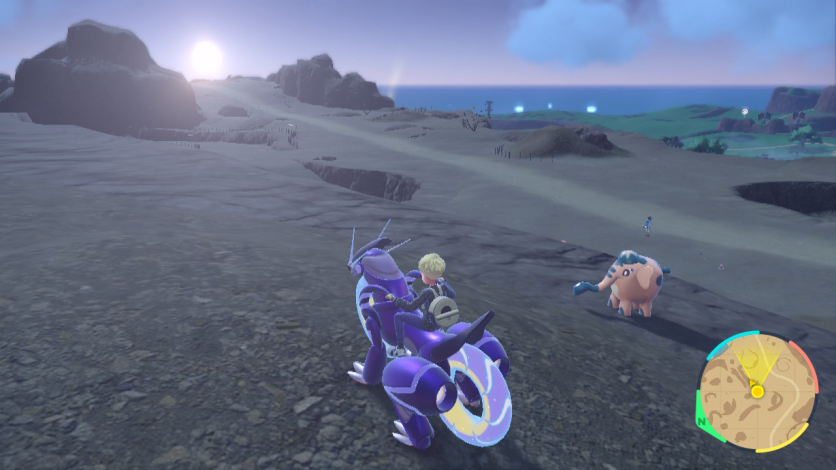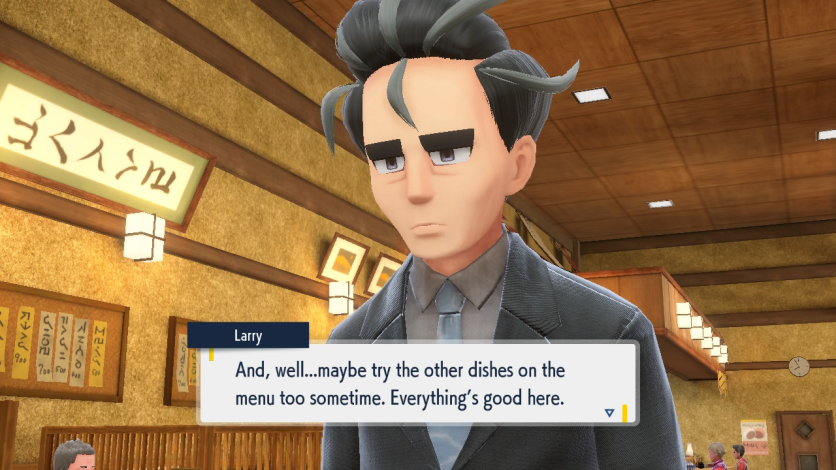It's 1999, and Pokémon Yellow was making waves in North America. Not a year before its release, the animated television series likewise set the stage for what would become arguably one of the most beloved IPs on the planet. While a trailing Pikachu proved to elicit immediate acclaim for me when it came to my experience with Pokémon Yellow, I realized there could be so much more. I wondered, then, what it would look and feel like if Pokémon, much akin to the television series, roamed about instead of being an arbitrary coded appearance in pixelated blades of grass.
Enter Pokémon Scarlet and Violet. It's hard to imagine a game more evocative of a lifelong day dream. While Pokémon Let's Go and even Legends Arceus both had Pokémon available out in the wild, it's made all the more otherworldly in Game Freak's newest iteration due largely to its vast interconnected world. This isn't Pokémon Yellow. This is Pokémon of the future, after all, both figuratively and literarily (if you're playing the Violet version, of course).

But, while it's open-world setting, free-roaming Pokémon, and future/past Pokémon plots prove to be enticing materials for a new mainline title, Scarlet and Violet somewhat fall by the wayside due in large part to their limited polish.
The games are irrevocably marred by their many glitches and bugs, social media of which ate up in a frenzy upon its official release on November 27th. But while the overall care may not have been there at the outset, several underlying mechanical and gameplay loop functionalities prove confusing, as well.
For instance, Paldea's open world basks in a sea of discoverability and wonder. But much of that exploration is blocked by level requirements, making traversal in late-game lands nigh impossible without appropriately-leveled 'Mons. It's strange to me why Game Freak didn't decide to go with a dynamic leveling system so as to allow a more fluid and approachable open world that lets players discover and explore on their own terms. Instead, at least for me, it wasn't easy to decide how best to approach my exploration of Paldea. At first I went right, fighting the grass and electric gyms before leaving on the map, which had the bug and water gyms.

Related Article: 'Pokemon Scarlet and Violet' Classes: How to Befriend a Teacher
To me, the left seems the more appropriate initial destination. The bug gym, no offense to avid bug trainers, screams tutorial. The game would have felt far more personal and even challenging had it leveraged a more dynamic leveling system, wherein trainers and gym leaders scaled to the level of your Pokémon.
I think the glitches speak for themselves, I don't need to rehash all of the many glaring visual and mechanical issues I saw while playing. While the internet was set ablaze by these memeworthy stopgaps, however, I must admit my time with the game didn't show too much in the way of anything game-breaking. Definitely, immersion-breaking, what with random pop-ins, fps drops, and the like.
Still, it cannot be left unstated how this experience is a true Pokémon game of my seven-year-old self's dreams - and, I'm sure, many like me. Having played both Scarlet and Violet, the individual stories don't stray too far apart. That is, up until the very end.

While the narrative more or less focuses on you, the trainer's exploits both in school and across Paldea, it's also very much a tale of Paldea itself. Its history and many varied Pokémon encompass its Spain-inspired landscape make up the bulk of its underlying story. From a reimagined Taurus, now sporting a Fighting type and clad in all-black fur, to the menacing new evolution to Primape, Paldea is full of immense wonder not just for newcomers but old Poke-heads alike. It's a testament to the IP'a age.
While most would disagree, I do feel the story is one of the best it's been for a mainline Pokémon game in quite some time. But I think it doesn't really get exciting until it's the third act. Most of the narrative is gifted via supposed run-ins with Nemona and the school's director. To me, is totally fine. I came here to battle the best and catch them all. I'd prefer not to be hampered by immense exposition dumps.
Still, Pokémon is certainly in need of a revamp to its storytelling pathos. Overall, the game shines brightest in its Pokemon battles, new Pokemon iterations, and the way players now tackle their adventure. For that, one must at least give the game some credit for adapting to the open world with some ingenuity.

Pokemon Scarlet and Violet are a pure testament to the evolution of this series and where best it will be suited long-term. These games, obviously, require a bit more time in the developmental oven and potentially even better hardware to boot, but in the end, I must give the 9th generation of Pokemon games a seven out of ten, merely for the myriad technical faults and several game mechanics that may have streamlined the experience.
It is one of Game Freak's first tries at the open-world concept, and it works quite extraordinarily. Hopefully, the series' next hit won't be hampered by said technical constraints and the variety of bugs so that its underlying beauty can shine like the Terrasteralization process it now boasts.
ⓒ 2025 TECHTIMES.com All rights reserved. Do not reproduce without permission.




